21 of My Favorite Sample Business Plans & Examples For Your Inspiration
I know firsthand that staring at a blank page is the hardest part of writing a business plan. Whether you’re launching a new venture or refining an existing one, having a roadmap is key. But, figuring out where to...

I know firsthand that staring at a blank page is the hardest part of writing a business plan. Whether you’re launching a new venture or refining an existing one, having a roadmap is key. But, figuring out where to start? That’s another story. To get over the hump, I recommend looking at real business plan examples. Seeing how other companies have structured their plans can spark ideas, give you a clear format to follow, and make the whole process feel way less overwhelming. So what does a good business plan look like? And how do you write one that’s both viable and convincing? In this post, I’ll share my favorite sample business plans and examples and walk you through the ideal business plan format. Table of Contents The format of your business plan will vary based on what offering you provide and who you’re targeting. So, I’ve added this quick review of different business plan types that can help you make the right decision. Check out this post to learn more. Startup business plans are for proposing new ideas and getting them off the ground. In this type of business plan, you should focus on what makes your offering different from competitors — in fact, you’ll even need a whole section dedicated to market analysis. You’ll also describe how you plan to secure funding or a request for funding to keep your business afloat. Not every business plan is meant for the public. In fact, internal business plans allow leaders to share goals, strategies, or performance updates with stakeholders who work at the company. In my opinion, internal business plans are useful for alignment and building support for ambitious goals. You can also share roadmaps you expect employees to follow. Strategic business plans are also shared internally. This plan covers long-term business objectives that might not have been included in the startup business plan. Your strategic plan can be revisited based on your company's maturity. You may also slot updates yearly, every few years, or based on major milestones. When a business is moving forward with an acquisition or repositioning, it may need extra structure and support. This type of business plan expands on a company's acquisition or repositioning strategy. Here leaders can explain why the acquisition occurred and how the company will restructure to incorporate the acquisition. Growth can happen organically as a business becomes more established. However, most leaders find growth plans can be helpful gauge progress. Growth business plans create a structure with specific expansion targets. This type of business plan can help teams focus on short-term growth goals, and align resources with those goals. So, now that you know the different types, what actually goes into a business plan? Below, I’ll create a startup business plan that’s detailed, research-backed, and compelling enough to convince investors to offer funding. But first, let’s talk about the sections you actually need to include. In my experience, the most comprehensive and convincing business plans contain the following sections. Your executive summary is the most important section of the entire business plan. It is an overview of and introduction to your entire project. I’d recommend adding two main elements to your executive summary: your company description and your offerings. Highlight your company’s mission statement and goals, a brief overview of your history and leadership, and your top accomplishments as a business. Tell potential investors who you are and why what you do matters. Naturally, they’re going to want to know who they’re getting into business with upfront. This is a great opportunity to showcase your impact. Need some extra help firming up your business goals? I’d recommend HubSpot Academy’s free course to help you set meaningful goals that matter most for your business. Incorporate an overview of your offerings. This doesn’t have to be extensive, it’s a chance to introduce your industry and overall purpose as a business. I recommend including snippets of information about your financial projections and competitive advantage here as well. Keep in mind that you'll cover many of these topics in more detail later on in the business plan. The executive summary should be clear and brief, only including the most important takeaways. Remember, this is just the intro of your plan. You should focus on the most important highlights only while keeping the entire summary under one page. Busy executives often make initial judgments based on just these few paragraphs, so you need to make them count. Here you’ll describe gaps in your industry’s market and how you plan to fill them. This section should be focused on the demand for your offering and the potential for growth. Ask and answer: Where is the gap in the current industry, and how will my product fill that gap? To get a thorough understanding of the market opportunity, conduct a TAM, SAM, SOM analysis, a SWOT analysis, and perform market research on your industry to get insights for this section. More specifically, here’s what I’d include. When writing this section, start with the unmet needs your business addresses, including why current solutions fall short. Then, quantify your target market with specific, verifiable data on market size, growth trends, and addressable segments. This section offers an overview of your competitors — including their strengths and weaknesses. The goal here is to differentiate your offerings in the industry. Performing a competitive analysis can help you uncover the following: I recommend creating a detailed comparison matrix that evaluates your direct and indirect competitors in the market. You can note helpful factors that customers consider, like pricing, features, and market share. This formatting helps highlight where your business has distinct advantages. This section describes your ideal customers, the problems that you can solve for them, and your customer acquisition strategy. Use this section to describe who your customer segments are in detail. I’d recommend building a buyer persona to get in the mindset of your ideal customers and be clear about why you're targeting them. Here are some questions I’d ask myself: When describing your target audience, be specific. You should include behavioral, demographic, and psychographic characteristics so your readers have a better sense of your ideal persona. Be sure to include any market research you’ve conducted that can drive the point home. Here, you need to discuss how you’ll acquire new customers with your marketing strategy. I think it’s helpful to have a marketing plan built out in advance to make this part of your business plan easier. I’d also suggest including these details: As a marketer, I recommend outlining a clear customer acquisition strategy. Be specific about channels, tactics, and messaging — including realistic cost projections and expected conversion rates. Any KPIs you establish here should be measurable. At some point in your business plan, you have to review the key features and benefits of your products and/or services. This can educate readers on how you’re positioning yourself in the market and the messaging you're likely to use. It can even help potential investors gain better insight into your business model. Use plain language to emphasize the value of your product/service, how it solves the problems of your target audience, and how you’ll scale up over time. In this section, I recommend focusing on customer outcomes instead of technical specifications. Each feature should connect to a specific, tangible benefit for your customer. Emphasize unique selling points first, and support each benefit claim with evidence to build credibility. In this section, discuss your cost structure and various revenue streams. Your pricing strategy must be solid enough to turn a profit, while staying competitive in the industry. For this reason, here’s what I’d outline in this section: Present multiple revenue streams and any growth projections you might have. If working with investors, they’ll want to know the initial pricing model and how revenue will scale. To me, this section is particularly informative for investors and leadership teams to figure out funding strategies, investment opportunities, and more. While some business plans might include more or less information, according to Forbes you'll want to include three main details: This is a great spot to highlight the most compelling financial indicators that can attract investors, such as customer acquisition costs relative to lifetime value. These metrics signal a sustainable business model. Okay, now that we have a format established, I wanted to share a business plan I made. Below, I’ll dive deep into the world of gluten-free bagels for a fictional, startup bakery. This executive summary example was created with HubSpot’s business plan template. Our Mission Maria’s Gluten Free Bagels offers gluten-free bagels, along with various toppings, other gluten-free breakfast sandwich items, and coffee. The facility is entirely gluten-free. Our team expects to catch the interest of gluten-free, celiac, or health-conscious community members who are seeking an enjoyable cafe to socialize. Due to a lack of gluten-free bagel products in the food industry currently, we expect mild competition and are confident we will be able to build a strong market position. The Company and Management Maria’s Gluten Free Bagels was founded in 2010 by Maria Jones, who first began selling her gluten-free bagels online from her home, using social media to spread the word. In 2012 she bought a retail location in Hamilton, MA, which now employs four full-time employees and six part-time employees. Prior to her bagel shop, Maria was a chef in New York and has extensive experience in the food industry. Along with Maria Jones, Gluten Free Bagel Shop has a board of advisors. The advisors are: Our Product We offer gluten-free products ranging from bagels and cream cheese to blueberry muffins, coffee, and pastries. Our customers are health-conscious, community-oriented people who enjoy gluten-free products. We will create a welcoming, warm environment with opportunities for open mic nights, poetry readings, and other community functions. We will focus on creating an environment in which someone feels comfortable meeting a friend for lunch, or working remotely. Our Competitive Advantages While there are other coffee shops and cafes in the North Shore region, there are none that offer purely gluten-free options. This restricts those suffering from gluten-free illnesses or simply those with a gluten-free preference. This will be our primary selling point. Additionally, our market research [see Section 3] has shown a demand for a community-oriented coffee and bagel shop in the town of Hamilton, MA. Financial Considerations Our sales projections for the first year are $400,000. We project a 15% growth rate over the next two years. By year three, we project 61% gross margins. We will have four full-time employees. The salary for each employee will be $50,000. Start-up Financing Requirements We are seeking to raise $125,000 in startup to finance year one. The owner has invested $50,000 to meet working capital requirements and will use a loan of $100,000 to supplement the rest. The executive summary above succinctly shares the biggest takeaways from the business plan. A busy investor wouldn’t need to read every page or flip around for important details. The most important information is all here and easy to find. You can also tell who this business plan is for: potential investors who can help finance year one. When writing an executive summary, you should customize the message to your audience. For example, this plan focuses on projected sales, growth, and financing needs. Feel free to check out our tips for writing an effective executive summary. The gluten-free food market has experienced explosive growth over the past decade, with a current global market valuation of $7.5 billion and projected annual growth of 9.2% through 2028. This growth is driven by three key factors: Addressable Market Size The total addressable market for Maria's Gluten Free Bagels within the Hamilton and North Shore region includes: Based on spending patterns for specialty food items and café services, we project the total addressable market value at $4.2 million annually, with Maria's positioned to capture 12-15% market share within three years. I like this example because it divides the market opportunity in two ways. First, the plan focuses on trends related to the population at large that make gluten-free shoppers a growing market segment. The second part of the plan takes these general trends and explores how they impact the local community. Maria's Gluten Free Bagels operates at the intersection of three food service categories: specialty bakeries, gluten-free establishments, and community-oriented cafes. This unique positioning creates a competitive advantage while also requiring analysis of competitors across overlapping sectors. Dedicated Gluten-Free Establishments Competitor Location Primary Offering Strengths Weaknesses Celia's Safe Eatery Boston, MA Full-service restaurant with gluten-free menu Pure Bread Bakery Salem, MA Gluten-free breads and pastries Free & Clear Sweets Beverly, MA Gluten-free desserts and treats While these competitors offer gluten-free products, none specifically focus on bagels as their signature item, and all are located at considerable distances from Hamilton, creating significant geographic advantage for Maria's. Additionally, our comprehensive approach to breakfast items, coffee, and community engagement creates multiple differentiation points. Local Cafés and Bakeries Competitor Location Gluten-Free Options Community Focus Competitive Threat Level Hamilton Coffee House Hamilton, MA Limited (2-3 items, cross-contamination risk) High (events, workspace) Medium Baxter's Bakery Hamilton, MA None Low Low Morning Grind Wenham, MA Limited (pre-packaged items only) Medium (local art) Medium-Low North Shore Bagel Shop Beverly, MA None Low Low These competitors capture general café traffic but present minimal threat to our core gluten-free customer base due to their limited offerings and cross-contamination risks that exclude celiac and highly sensitive customers. I like how the competitive landscape section of this business plan clearly outline top competitors. It also highlights specific industry knowledge and the importance of location. Tables make everything easy to skim, so I’m not wasting any time. Maria's Gluten Free Bagels serves three distinct customer segments, each with unique characteristics, needs, and purchasing behaviors: 1. Medical Necessity Customers (35% of Revenue) Demographic Profile: Psychographic Characteristics: Behavioral Patterns: 2. Health and Wellness Adopters (40% of Revenue) Demographic Profile: Psychographic Characteristics: Behavioral Patterns: 3. Community and Convenience Customers (25% of Revenue) Demographic Profile: Psychographic Characteristics: Behavioral Patterns: This section include information about different types of shoppers organized by persona. The reader can clearly see the different motivations that drive each type of customer. The information above is specific, showing that the business knows their audience and has surveyed them. Brand Positioning Maria's Gluten Free Bagels will position itself as the premier dedicated gluten-free café in the North Shore region, emphasizing three core brand pillars: Multi-Channel Strategy Website & SEO ($8,000 annually) Social Media Marketing ($12,000 annually) Email Marketing ($4,000 annually) Loyalty Program ($5,000 annually) Local Print & Media ($6,000 annually) Signage & Physical Presence ($7,000 annually) Marketing Calendar & Implementation The marketing strategy will be implemented through a detailed quarterly calendar with: Even though this strategy is brief, the section specifies how much the business plans to invest on each marketing channel and on what activities. The plan also specifies how the marketing team or business owner plans to promote the bagel shop by including calendar details. Maria's Gluten Free Bagels serves consumers seeking a high-quality, gluten-free dining option. Our flagship offering is our artisanal gluten-free bagels, made with recipes developed decades. The texture and taste are the same as regular bagels — a big achievement when dietary restrictions limit customers to subpar alternatives. The dedicated gluten-free facility eliminates all cross-contamination risks, providing peace of mind to celiac and highly sensitive customers. Beyond our signature bagels, we provide a full cafe experience with gluten-free breakfast sandwiches, pastries, and specialty coffee. This menu transforms what could be merely a bakery into a destination where customers can enjoy a full meal. Our community-centered approach features regular events. We can deliver value beyond food by creating a social hub where dietary restrictions don't limit participation. Because this example focuses on a bagel shop, this business plan section is short and sweet. I focused first on the flagship product, the bagels themselves, and describe what makes them standout. Then, I cover secondary benefits, like a full menu and community space. Core Product Pricing: This pricing structure has been validated through customer surveys, which revealed that 78% of our medical necessity customers and 65% of health-conscious customers consider our pricing “reasonable” or "very reasonable.” Revenue Streams I like how this business plan example begins with product pricing and then shows what percent these items contribute to the shop’s revenue. By including customer survey results, investors know that the prices have been set with customers in mind. Three-Year Financial Summary Financial Metric Year 1 Year 2 Year 3 Total Revenue $400,000 $460,000 $580,000 Gross Profit $268,000 $314,900 $403,900 Gross Margin 67% 68.5% 69.6% Operating Expenses $208,000 $226,200 $263,800 EBITDA $60,000 $88,700 $140,100 EBITDA Margin 15% 19.3% 24.2% Net Income $39,600 $63,020 $105,075 Net Profit Margin 9.9% 13.7% 18.1% Cash Flow Projections Cash Flow Item Year 1 Year 2 Year 3 Beginning Cash $33,000 $48,600 $92,620 Cash from Operations $60,000 $88,700 $140,100 Debt Service ($24,000) ($24,000) ($24,000) Capital Expenditures ($15,000) ($12,000) ($18,000) Tax Payments ($5,400) ($8,680) ($15,225) Ending Cash $48,600 $92,620 $175,495 For the $50,000 owner investment and $25,000 additional funding requested: Not only are charts with financial information included, but the business plan also features an estimated timeline on when investors can expect a return on their investment. This can help the business secure funding and speak directly to potential investors. Now that you know how to format a business plan, let’s review some of my favorite templates that can make the process quick and easy. Download a free, editable one-page business plan template. This business plan was created here at HubSpot and is perfect for businesses of any size — no matter how many strategies you still have to develop. I love how all important information is kept to one page, keeping information focused. Fields such as Company Description, Required Funding, and Implementation Timeline give this business plan a framework for how to build your brand and what tasks to keep track of as you grow. Then, as the business matures, you can expand on your original business plan with a new iteration of the above document. This one-page business plan is a fantastic choice for the new business owner who doesn’t have the time or resources to draft a full-blown business plan. It includes all the essential sections in an accessible, bullet-point-friendly format. That way, you can get the broad strokes down before honing in on the details. We also created a business plan template for entrepreneurs. The template is designed as a guide and checklist for starting your own business. You’ll learn what to include in each section of your business plan and how to do it. There’s also a list for you to check off when you finish each section of your business plan. I appreciate that these templates are designed specifically for startups. You’re prompted with a description of what the section should include, then a box where you can fill in the information. This business plan kit is essential for the budding entrepreneur who needs a more extensive document to share with investors and other stakeholders. It not only includes sections for your executive summary, product line, market analysis, marketing plan, and sales plan, but it also offers hands-on guidance for filling out those sections. If you want to attract investors with your business plan, consider this free template from LivePlan. It’s a sample business plan template that’s structured in an SBA-lender-approved format and also designed to impress lenders and investors. Each section includes detailed instructions and prompts to help you think through and communicate the uniqueness of your business. With the help of this template, plus all the additional prompts, instructions and pro tips provided, creating an investor-friendly business plan becomes simple and straightforward, This basic template from the Corporate Finance Institute (CFI) covers all the important sections needed to create a credible business plan to achieve your goals. The CFI template allows you to dive deep into operations. You can outline information related to management and finances that a standard plan just glosses over. This template is a great option whether you want to pitch investors and financial institutions or create a business plan that serves as a road map for your business. One of the more financially oriented sample business plans in this list, BPlan’s free business plan template dedicates many of its pages to your business’s financial plan and financial statements. After filling this business plan out, your company will truly understand its financial health and the steps you need to take to improve it. I absolutely love this business plan template because of its ease of use and hands-on instructions. If you feel overwhelmed by the thought of writing an entire business plan, consider using this template to help you with the process. If you’re looking for a detailed free template that can guide you to identify your business goals, develop actionable strategies and create a winning business plan, Growthink has you covered. This sample business plan can be used for any type of business and is available in both PDF and Word files. This is a fantastic template for both new and existing businesses. If you want to improve the bottom line of your existing company or revitalize your strategy, this is an excellent template to use and follow. If you’re an entrepreneur, you know writing a business plan is one of the most challenging first steps to starting a business. Fortunately, with HubSpot‘s comprehensive guide to starting a business, you’ll learn how to map out all the details by understanding what to include in your business plan and why it’s important to include them. This guide also fleshes out an entire sample business plan for you. If you need further guidance on starting a business, HubSpot's guide can teach you how to make your business legal, choose and register your business name, and fund your business. It will also give small business tax information and includes marketing, sales, and service tips. This comprehensive guide will walk you through the process of starting a business — including writing your business plan — with a high level of exactitude and detail. It also offers other resources you might need, such as market analysis templates. So if you’re in the midst of starting your business, this is an excellent guide for you. Since writing this article, there’s now an amazing suite of products available for new business builders called HubSpot Starter. It’s essential for businesses trying to get their plan in motion, giving you all the tools you need to build your brand online. It can be a huge help in finding critical information to build out your business plan with realistic numbers — among many other benefits — and I highly recommend it. PandaDoc’s free business plan template is one of the more detailed and fleshed-out sample business plans on this list. It describes what you should include in each section, so you don't have to come up with everything from scratch. Once you fill it out, you’ll fully understand your business’ nitty-gritty details and how all of its moving parts should work together to contribute to its success. This template has two things I love: comprehensiveness and in-depth instructions. Plus, it’s synced with PandaDoc’s e-signature software so that you and other stakeholders can sign it with ease. For that reason, I especially love it for those starting a business with a partner or with a board of directors. The Small Business Administration (SBA) offers several free business plan templates that can be used to inspire your own plan. Before you get started, you can decide what type of business plan you need — a traditional or lean start-up plan. Then, you can review the format for both of those plans and view examples of what they might look like. I love both of the SBA’s templates because of their versatility. You can choose between two options and use the existing content in the templates to flesh out your own plan. Plus, if needed, you can get a free business counselor to help you along the way. I’ve compiled some completed business plan samples to help you get an idea of how to customize a plan for your business. While some are extensive, others are fairly simple. Let’s take a look. One of the major business expenses is marketing. How you handle your marketing reflects your company’s revenue. I included this business plan to show you how you can ensure your marketing team is aligned with your overall business plan to get results. The plan also shows you how to track even the smallest metrics of your campaigns, like ROI and payback periods instead of just focusing on big metrics like gross and revenue. Fintech startup, LiveFlow, allows users to sync real-time data from its accounting services, payment platforms, and banks into custom reports. This eliminates the task of pulling reports together manually, saving teams time and helping automate workflows. “Using this framework over a traditional marketing plan will help you set a profitable marketing strategy taking things like CAC, LTV, Payback period, and P&L into consideration,” explains LiveFlow co-founder, Lasse Kalkar. When it came to including marketing strategy in its business plan, LiveFlow created a separate marketing profit and loss statement to track the company's progress with its marketing initiatives. This is a great approach, allowing businesses to focus on where their marketing dollars are making the most impact. Having this information handy will enable you to build out your business plan’s marketing section with confidence. LiveFlow has shared the template here. You can test it for yourself. This sample business plan for a fitness studio is detailed and comprehensive. And guess what? It was created in minutes, using a free AI business plan generator. In their operations plan, Core Strength also shared milestones they hope to achieve within a few months like securing a location, getting necessary permits and licenses, studio setup, hiring instructors, establishing an online presence, and more If you’re seeking outside funding for your business, this is a great sample business plan to use and model your business plan after. This business plan example is well-prepared and I think it’s great for service-based businesses such as gyms, boxing classes, dancing studios, etc. I also love all the details and milestones shared in the operations plan and other sections. Sometimes, all you need is a solid mission statement and core values to guide you on how to go about everything. You do this by creating a business plan revolving around how to fulfill your statement best. For example, Patagonia is an eco-friendly company, so their plan discusses how to make the best environmentally friendly products without causing harm. A good mission statement should not only resonate with consumers but also serve as a core value compass for employees as well. Patagonia has one of the most compelling mission statements I’ve seen: “Together, let’s prioritize purpose over profit and protect this wondrous planet, our only home.” It reels you in from the start, and the environmentally friendly theme continues throughout the rest of the statement. This mission goes on to explain that they are out to “Build the best product, cause no unnecessary harm, and use business to protect nature.” Their mission statement is compelling and detailed, with each section outlining how they will accomplish their goal. This executive summary for a smart home device startup is part of a business plan created by students at Mount Royal University. While it lacks some of the sleek visuals of the templates above, its executive summary does a great job of demonstrating how invested they are in the business. Right away, they mention they’ve invested $200,000 into the company already, which shows investors they have skin in the game and aren’t just looking for someone else to foot the bill. This is the kind of business plan you need when applying for business funds. It clearly illustrates the company's expected future and how it has been progressing over the years. This fictional business plan for an art supply store includes everything one might need in a business plan. One of its most notable sections is its market analysis summary, which includes an overview of the population growth in the business’ target geographical area, as well as a breakdown of the types of potential customers they expect to welcome at the store. This sort of granular insight is essential for understanding and communicating your business’s growth potential. Plus, it lays a strong foundation for creating relevant and useful buyer personas. It’s essential to keep this information up-to-date as your market and target buyer changes. For that reason, you should carry out market research as often as possible to ensure that you’re targeting the correct audience and sharing accurate information with your investors. Due to its comprehensiveness, it’s an excellent example to follow if you’re opening a brick-and-mortar store and need to get external funding to start your business. If you’re looking for a SaaS business plan example, look no further than this business plan for a fictional educational software company called Curriculum Companion Suites. One of the most notable features of this business plan is the executive summary, which includes an overview of the product, market, and mission. The first two are essential for software companies because the product offering is so often at the forefront of the company’s strategy. Without that information being immediately available to investors and executives, then you risk writing an unfocused business plan. It’s essential to front-load your company’s mission if it explains your “Why?” and this example does just that. In other words, why do you do what you do, and why should stakeholders care? This is an important section to include if you feel that your mission will drive interest in the business and its offerings. This AI-generated sample business plan for a grocery store is an excellent example of how to outline your business plan and ensure it flows naturally, engages readers, and provides the critical information investors and stakeholders need. You can use this template as a guide whenever you‘re gathering important information for your own business plan. As a result, get a better understanding of the data and research you need to create a winning business plan. When creating your own business plan, make sure the pictures and design you use make sense for your branding. The images in this plan are cutting-edge, which makes sense for an innovative company like Plum. This is one of my favorite sample business plans because you can see how implementing visuals can help tell your brand‘s story. Additionally, the financial charts included are an excellent guide if you’re not sure what financial information to include. Because most startups are new companies just entering the market, it's okay to keep your startup business plans short and concise with enough information. Here are some startup business plan examples and templates I also discovered: If you want to launch a highly profitable startup business quickly and need a stress-free way to develop your business plan faster, this startup business plan from Business Dojo is a great option. It’s a complete business plan that’s fully customizable. With this business plan, you will get all the data about your market and industry trends. Once you buy this business plan, you’ll have free unrestricted access to a team of experts with over 12 years of experience writing business plans for entrepreneurs. They will be available to discuss with you, answer your questions, and ensure you get a business plan that’s customized for you and your business at no extra cost. This lean business plan example for a restaurant is a fantastic option for an entrepreneur who wants to attract investors as quickly as possible. It’s a customer-centric business plan that’s condensed to a single page, focuses mainly on the major aspects of a business, and provides insights on key performance indicators and business metrics. I love how simple, clear and visually appealing this startup business plan is. You need less time and resources to create it, and people can quickly read and understand everything at a glance. Whether you’re writing a business plan for the first time or not, the entire process can appear daunting or overwhelming, and I get it. But it doesn’t have to be. To help you avoid starting from scratch, I’ve shared my favorite templates and sample business plans above. Most of the templates are free and I’m excited because you can choose one, customize it for your business and hit the ground running. In addition, feel free to read the sample business plans for more ideas and inspiration. And if you’re interested, AI tools are also available to help you write your business plan faster. All in all, start by understanding the unique value your business provides, then communicate it effectively through a type of business plan that can help you achieve your goals. Editor's note: This post was originally published in November 2018 and has been updated for comprehensiveness. This article was written by a human, but our team uses AI in our editorial process. Check out our full disclosure to learn more about how we use AI.Business Plan Types
1. Startups
2. Internal Use
4. Strategic Initiatives
5. Business Acquisition or Repositioning
6. Growth
Business Plan Format
Executive Summary
Company Description
Products and Services
How to Get It Right
Market Opportunity
How to Get It Right
Competitive Landscape Analysis
How to Get It Right
Target Audience
How to Get It Right
Marketing Strategy
How to Get It Right
Key Features and Benefits
How to Get It Right
Pricing and Revenue
How to Get It Right
Financials
How to Get It Right
Sample Business Plan: Section by Section
1. Executive Summary Example
Why This Example Works
Tips for Writing Your Executive Summary
Start with a strong introduction of your company, showcase your mission and impact, and then outline the offering you provide.
Clearly define a problem, explain how your product solves that problem, and show why the market needs your business.
Be sure to highlight your value proposition, market opportunity, and growth potential.
Keep it concise and support ideas with data.
2. Market Opportunity Example
Why This Example Works
Tips for Writing Your Market Opportunity Section
Focus on demand and potential for growth.
Use market research, surveys, and industry trend data to support your market forecast and projections.
Add a review of regulation shifts, tech advances, and consumer behavior changes.
Refer to reliable sources.
Showcase how your business can make the most of this opportunity.
3. Competitive Landscape Analysis Example
Wide menu variety
Strong brand recognition
High price point
Urban location only
Limited breakfast options
Wholesale distribution
Certified gluten-free
Strong online presence
Limited cafe seating
No coffee program
Minimal community engagement
Appealing visual branding
Strong social media following
Multiple dietary accommodations
No savory options
Limited hours (Th-Sun only)
Small production capacity
Why This Example Works
Tips for Writing Your Competitive Landscape
Complete in-depth research, then emphasize your most important findings.
Compare your unique selling proposition (USP) to your direct and indirect competitors.
Look for specific advantages and barriers in the competitive landscape. Then, highlight how that information could impact your business.
Outline growth opportunities from a competitive perspective.
Add customer feedback and insights to support your competitive analysis.
4. Target Audience
Why This Example Works
Tips for Writing Your Target Audience Section
Include details on the size and growth potential of your target audience.
Figure out and refine the pain points for your target audience, then show why your product is a useful solution.
Describe your targeted customer acquisition strategy in detail.
Share anticipated challenges your business may face in acquiring customers and how you plan to address them.
Add case studies, testimonials, and other data to support your target audience ideas.
Remember to consider niche audiences and segments of your target audience in your business plan.
5. Marketing Strategy
Why This Example Works
Tips for Writing Your Marketing Strategy
Include a section about how you believe your brand vision will appeal to customers.
Add the budget and resources you'll need to put your plan in place.
Outline strategies for specific marketing segments.
Explain how you plan to create marketing content.
Review how your marketing strategy will scale with the growth of your business.
Cover a range of channels and tactics to highlight your ability to adapt your plan in the face of change.
6. Key Features and Benefits
Why This Example Works
Tips for Writing Your Key Features and Benefits
Emphasize why and how your product or service offers value to customers.
Talk about how your products and services have the potential to scale.
Focus on customer needs, and how the features and benefits you are sharing meet those needs.
Offer proof of concept for your ideas, like case studies or pilot program feedback.
Proofread this section carefully, and remove any jargon or complex language.
7. Pricing and Revenue
Why This Example Works
Tips for Writing Your Pricing and Revenue Section
Get specific about your pricing strategy. Specifically, how you connect that strategy to customer needs and product value.
If you are asking a premium price, share unique features or innovations that justify that price point.
Show how you plan to communicate pricing to customers.
Create an overview of every revenue stream for your business and how each stream adds to your business model as a whole.
Share plans to develop new revenue streams in the future.
Show how and when pricing will vary by customer segment, and how pricing aligns with marketing strategies.
Restate your value proposition and explain how it aligns with your revenue model.
8. Financials
Why This Example Works
Tips for Writing Your Financials Section
Growth potential is important in this section too. Use your data and create a forecast of financial performance for the next three to five years.
Include any data that supports your projections, to assure investors of the credibility of your proposal.
Add a break-even analysis to show that your business plan is financially practical. This information can also help you pivot quickly as your business grows.
Add a section that reviews potential risks and how sensitive your plan is to changes in the market.
Triple-check all financial information in your plan for accuracy.
Show how any proposed funding needs align with your plans for growth.
Sample Business Plan Templates
1. HubSpot's One-Page Business Plan
Why I Like This Business Plan
2. HubSpot's Downloadable Business Plan Template
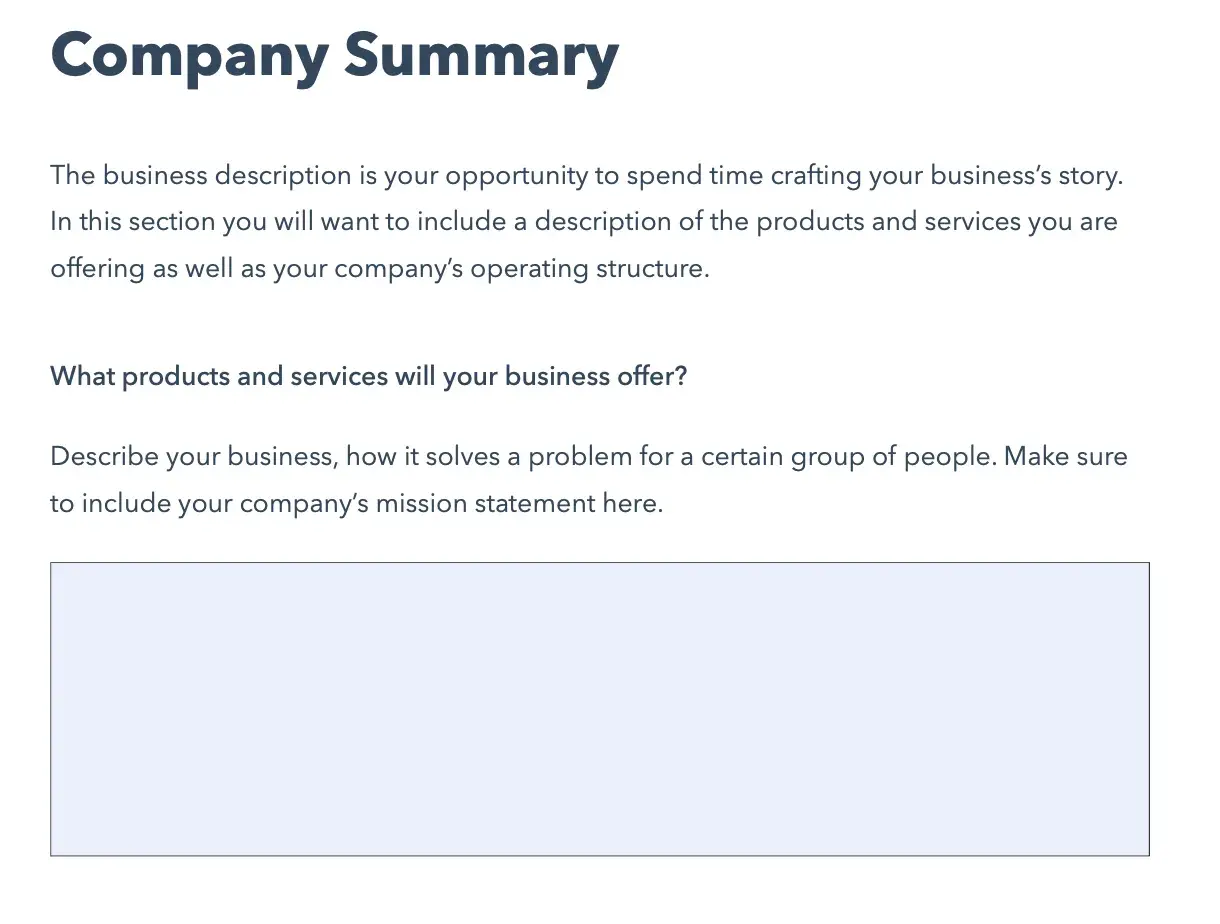
Download a free, editable one-page business plan template.
Why I Like This Business Plan
3. LivePlan Business Plan Template
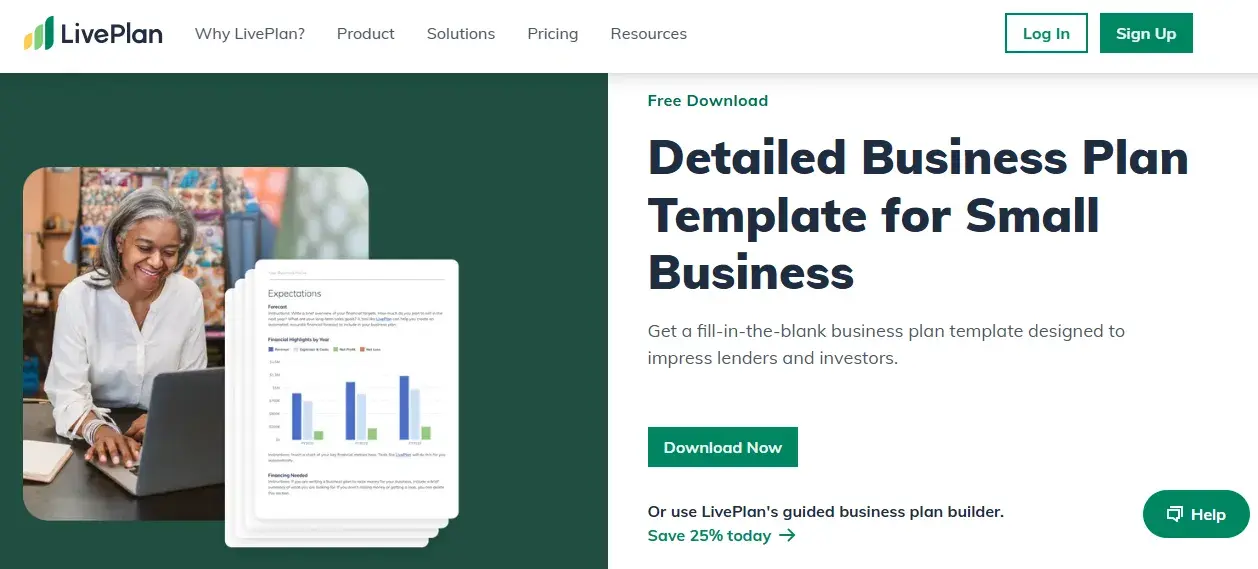
Why I Like This Business Plan
4. CFI Business Plan Template

Why I Like This Business Plan
5. BPlan’s Free Business Plan Template

Why I Like This Business Plan
6. Growthink Business Plan Template
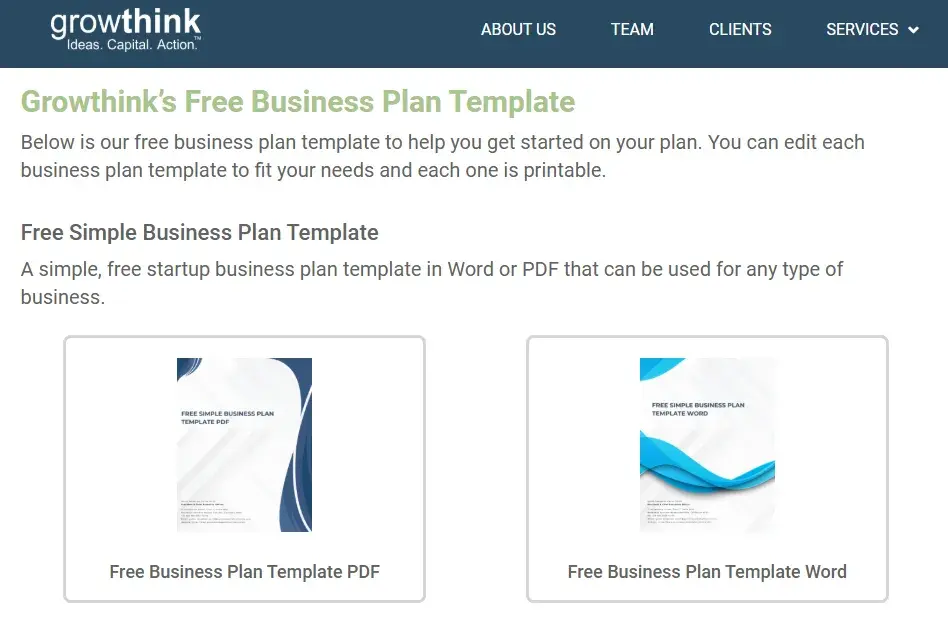
Why I Like This Business Plan
7. HubSpot’s Complete Guide to Starting a Business
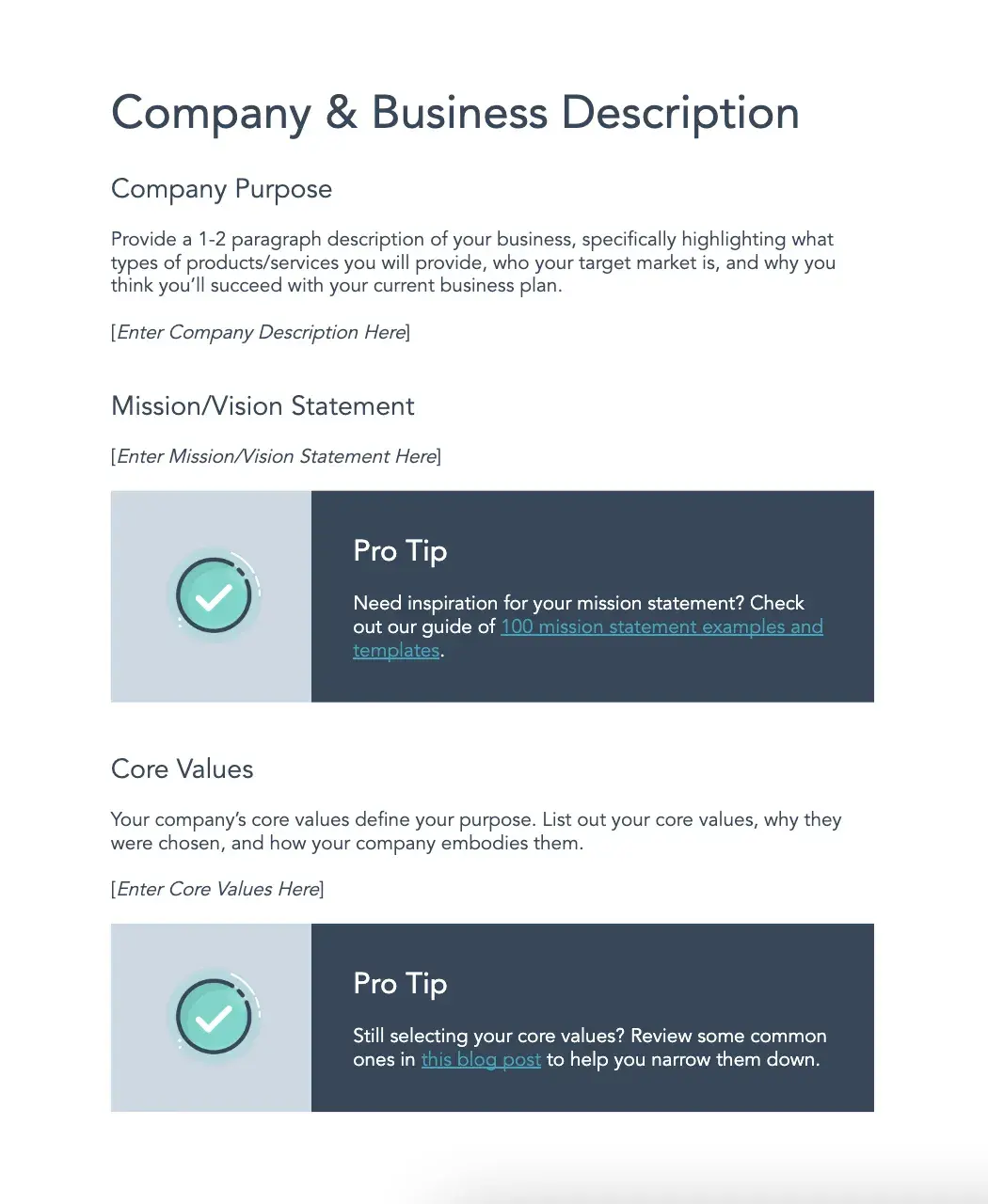
Why I Like This Business Plan
8. Panda Doc’s Free Business Plan Template

Why I Like This Business Plan
9. Small Business Administration Free Business Plan Template
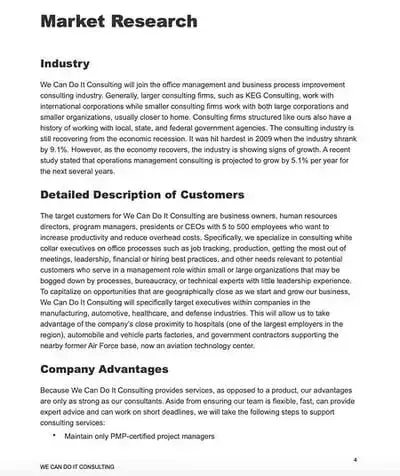
Why I Like This Business Plan
Top Business Plan Examples
1. LiveFlow
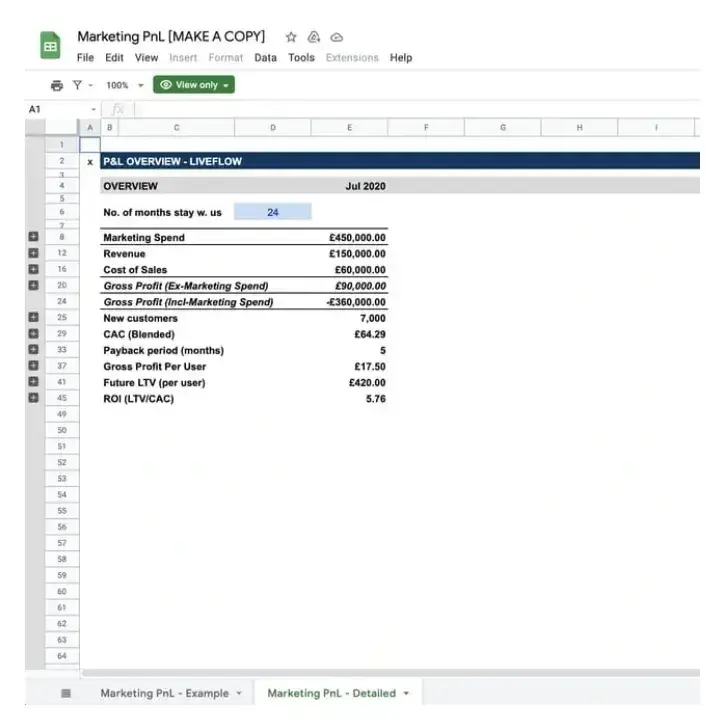
Why I Like This Business Plan
2. Core Strength Pilates Studio
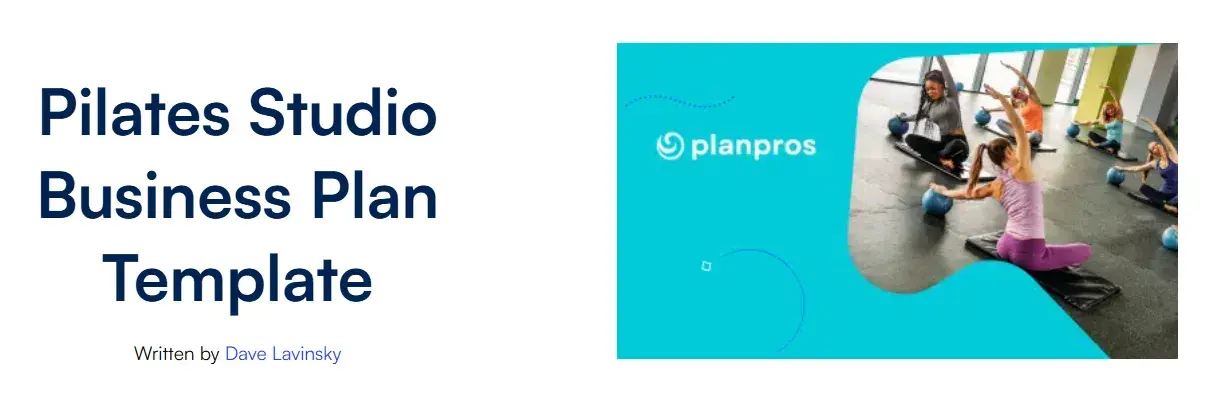
Why I Like It
3. Patagonia
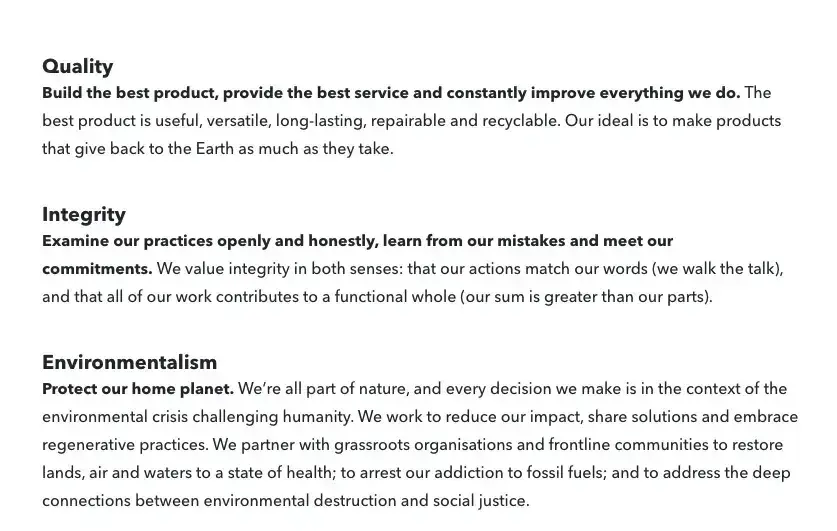
Why I Like This Business Plan
4. Vesta Home Automation
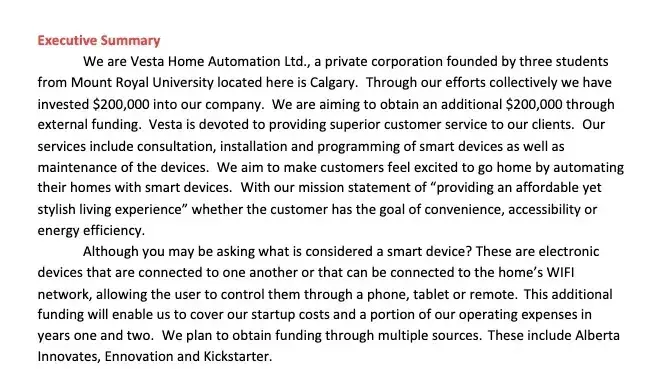
Why I Like This Business Plan
5. NALB Creative Center
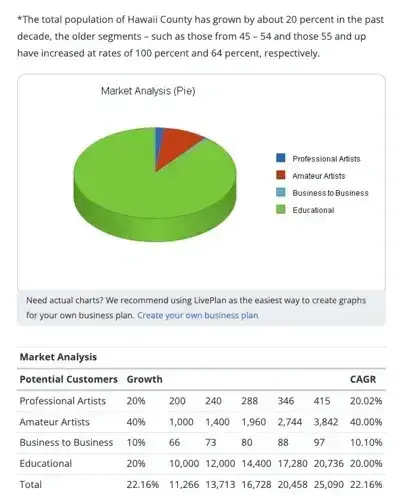
Why I Like This Business Plan
6. Curriculum Companion Suites (CCS)
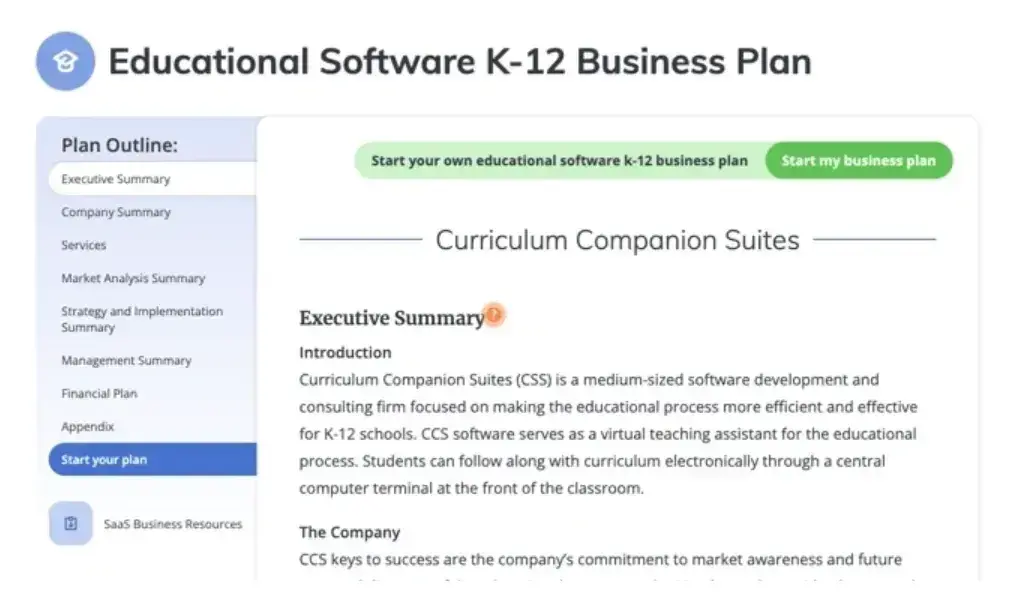
Why I Like This Business Plan
7. FreshField Market

Why I Like This Business Plan
8. Plum Sample Business Plan

Why I Like This Business Plan
Startup Business Plan Examples
1. BusinessDojo Startup Business Plan
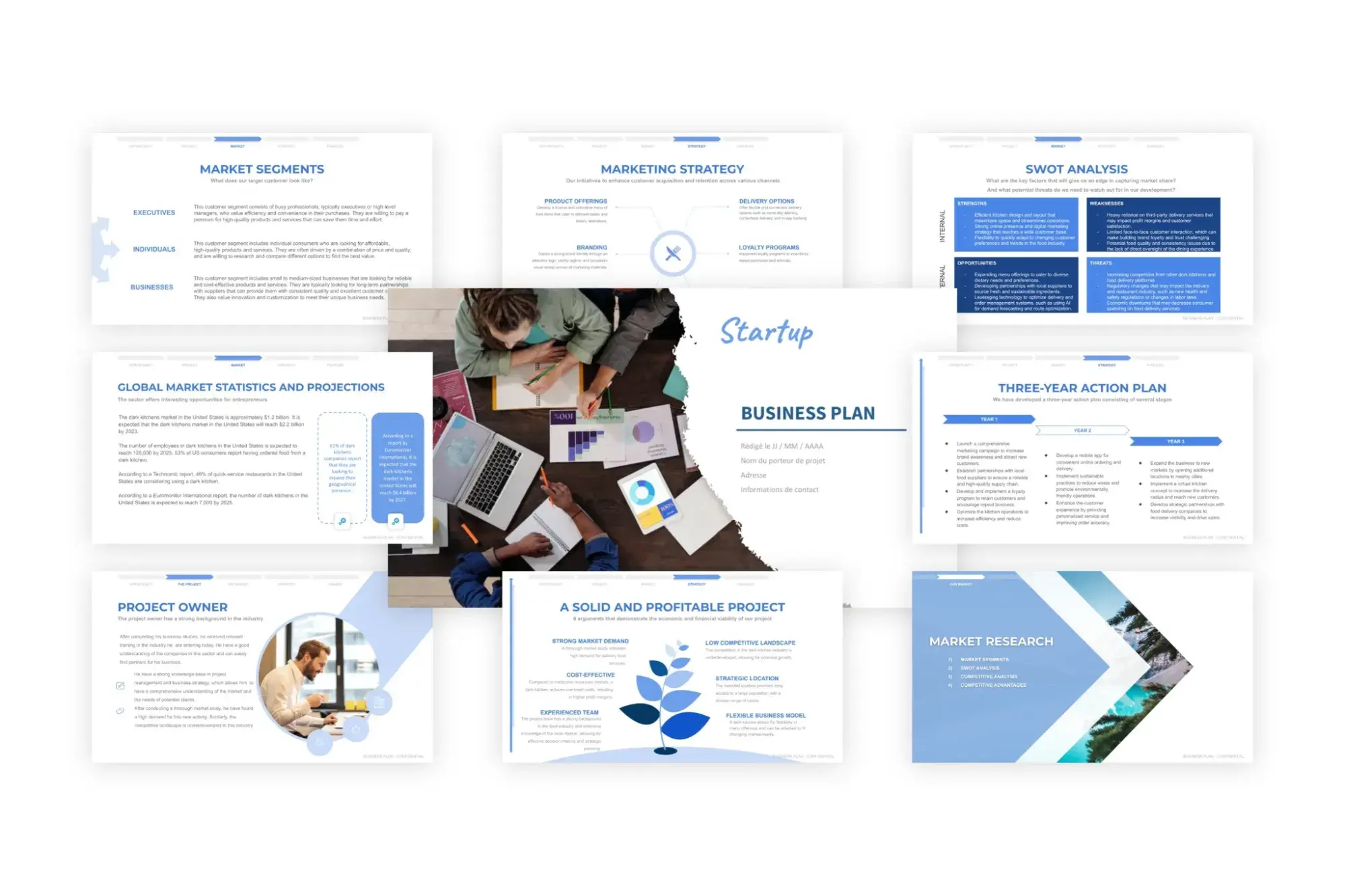
Why I Like It
2. Restaurant Lean Business Plan
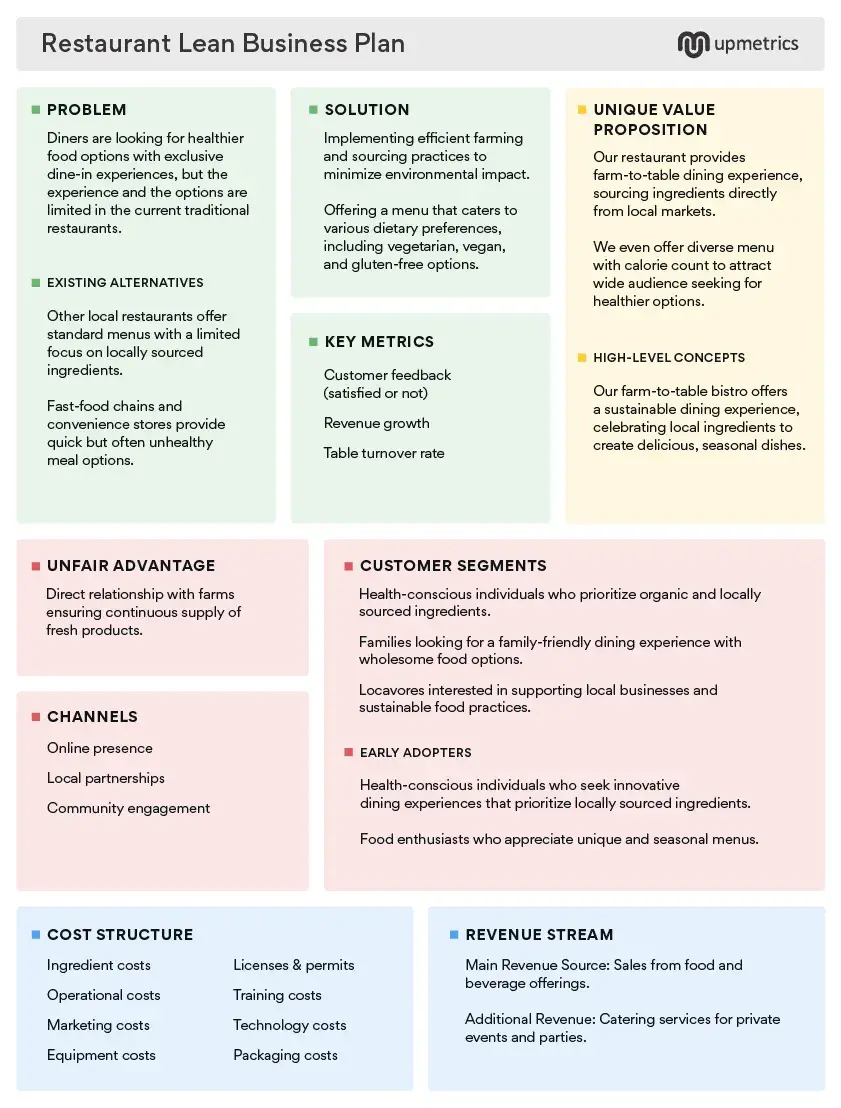
Why I Like It
Get Started Writing Your Business Plan

 FrankLin
FrankLin 
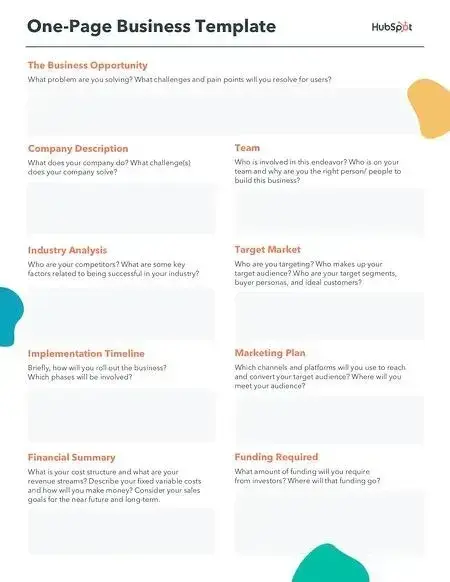









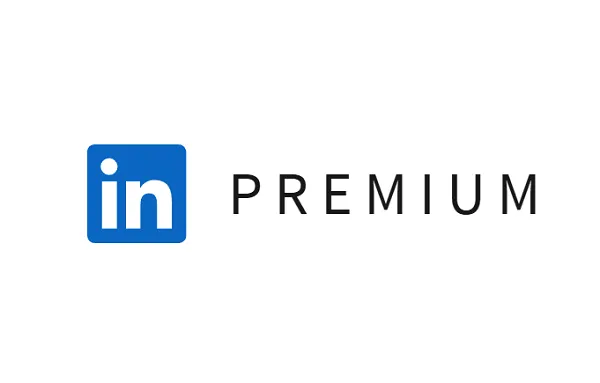


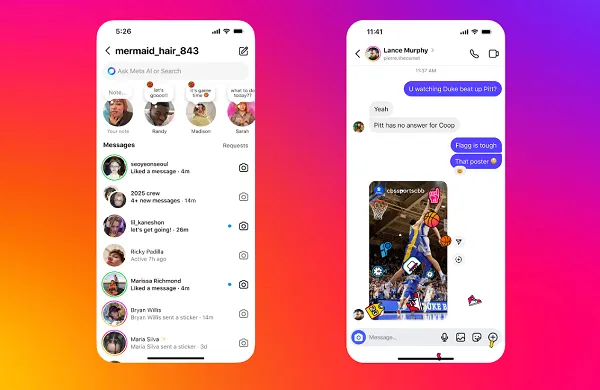







![The 2026 AI Search Benchmark Every SEO Leader Needs [Webinar] via @sejournal, @lorenbaker](https://www.searchenginejournal.com/wp-content/uploads/2025/11/1-259.png)












